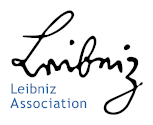- The Institute
- Research
- Dictatorships in the 20th Century
- Democracies and their Historical Self-Perceptions
- Transformations in Most Recent History
- International and Transnational Relations
- Edited Source Collections
- Dissertation Projects
- Completed Projects
- Dokumentation Obersalzberg
- Center for Holocaust Studies
- Berlin Center for Cold War Studies
- Publications
- Vierteljahrshefte
- The Archives
- Library
- Center for Holocaust Studies
- News
- Dates
- Press
- Recent Publications
- News from the Institute
- Topics
- Munich 1972
- Confronting Decline
- Feminist, Pacifist, Provocateur
- Der Mauerbau als Audiowalk
- Digital Contemporary History
- Transportation in Germany
- Envisaged Futures at the End of the Cold War
- From the Reichsbank to the Bundesbank
- German Federal Chancellery
- History of Sustainabilities: Discourses and Practices since the 1970s
- Changing Work
- Democratic Culture and the Nazi Past
- The History of the Treuhandanstalt
- Foreign Policy Documentation (AAPD)
- Dokumentation Obersalzberg
- Hitler, Mein Kampf. A Critical Edition
- "Man hört, man spricht"
- Dictatorships in the 20th Century
- Democracies and their Historical Self-Perceptions
- Transformations in Most Recent History
- International and Transnational Relations
- Edited Source Collections
- Dissertation Projects
- Completed Projects
- Dokumentation Obersalzberg
- Center for Holocaust Studies
- Berlin Center for Cold War Studies
Paths of Experience, Ways of Remembrance: The Holocaust in Vojvodina from the Perspective of Jewish Victims and Ethnic German Expellees (Working Title)
Employees (IfZ):
Dr. Caroline Mezger
Projektinhalt:
While “from below” studies on the Holocaust in Eastern and Central Europe have flourished in recent years, micro-level research on the Shoah´s multifarious contexts and repercussions in Southeastern Europe is still lacking. Focusing on one specific region, Vojvodina, this project seeks to shed a transnational and comparative light not only on the manner in which the Holocaust occurred in Southeastern Europe´s multiethnic borderlands, but also on the ways in which the Holocaust was experienced, remembered, and narrated during the postwar period by the individuals involved in its horrors.
A former Habsburg territory, Vojvodina was home to both considerable Jewish and ethnic German minorities. Following its 1918 cession to Yugoslavia, the region was occupied and divided by Axis forces in April 1941: the Batschka was ceded to Hungary; the Western Banat was occupied by the Third Reich and administered by local ethnic Germans; and Syrmia was incorporated into the fascist-led Independent State of Croatia. In all these territories, Jews became the target of antisemitic legislation, violence, and murder; ultimately, as in the case of the Banat, they fell victim to some of Nazi Germany´s earliest and most comprehensive antisemitic extermination policies. With the arrival of Soviet troops in the fall of 1944, the tides once again turned: the region´s ethnic Germans – previously organized overwhelmingly into pro-Nazi organizations – either fled their hometowns or faced acts of violence, internment in partisan camps, or deportation to the Soviet Union.
With the contention at its basis that the history of the Holocaust in Southeastern Europe is necessarily to be conceptualized as an “integrated history” (Friedländer), this project uses archival sources, original oral history interviews, memoirs, and Jewish and German historiographies of the postwar period to reconstruct the micro-level entanglements of the experiences, perspectives, and narratives of the “victims,” “perpetrators,” and “bystanders” of the Holocaust in Vojvodina, while questioning the validity of such rigid categories to begin with. As such, this project not only aims to present a first micro-level history of the Holocaust in the region; it also seeks to explore the ways in which World War II´s larger contexts – of occupations and civil wars, the redrawing of boundaries, multiple ethnic cleansings, and postwar reconstructions – shaped individuals´ own conceptualizations and narratives of the Holocaust.





